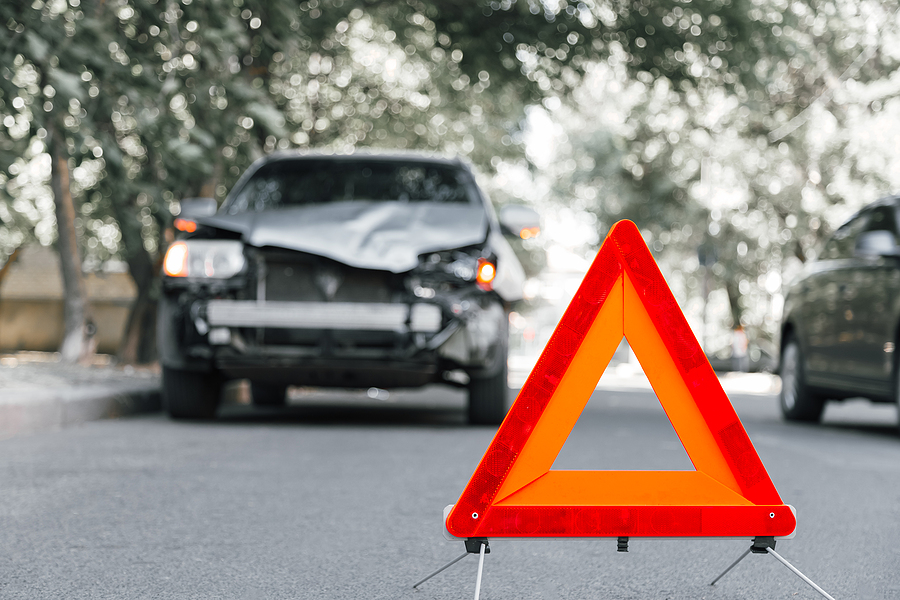
In the United States in 2019, there were approximately 36,096 fatalities because of car accidents. The state of Minnesota accounted for 364 of those deaths. Car accidents are incredibly common, and chances are you’ll get into at least one in your lifetime. On average, there are six million car accidents in the United States each year, including fatal accidents, accidents that cause injury, and accidents that don’t cause any harm to the drivers.
Rear-end accidents are among the more common car accident types, with 2,439 fatalities occurring because of rear-ending accidents in 2018, 7.2% of all fatal accidents that year following only behind angle accidents at 17.9%.
What is a rear-end car accident?
A rear-end car accident occurs when a vehicle is struck from behind by another vehicle. These accidents most often occur at intersections such as stoplights and stop signs. However, they also occur on highways and other roads when one driver slows down and the following driver doesn’t notice in time.
How are rear-end collisions caused?
Rear-end accidents are often caused because the driver that strikes the car in front of them wasn’t paying attention. The driver could be texting, talking on the phone, eating, or partaking in another form of distracted driving. They may also have been speeding, driving aggressively, or following too close.
Some examples of rear-end accidents include:
- The at-fault driver was following too closely and didn’t have enough time to slow down when the car in front of them came to an abrupt stop.
- Back driver wasn’t paying attention and didn’t notice that a stoplight turned red. They kept driving and hit the lead driver, who stopped at the red light. This is a common occurrence of distracted driving.
- Front driver drove with broken brake lights, so the following driver didn’t know that they were slowing down.
- Driver in front accidentally put their car into reverse. And instead of going forward, they reversed back into the following driver.
- Front driver pulled out in front of the following driver too abruptly, not giving the following driver enough time to slow down.
- Back driver was intoxicated and followed the lead driver too closely, wasn’t paying close enough attention, or didn’t notice the lead driver was stopped.
- Back driver intentionally crashed into the vehicle in front of them because of road rage.
- Lead driver checked their brakes when the following driver wasn’t giving them enough space.
What kinds of injuries can result from a rear-end accident?
Because you’re struck from the behind in a rear-end accident, these accidents result more often in injuries that affect the back and neck. The force from behind and the impact to the front of the body from the steering wheel and airbags are enough to cause permanent damage. The injuries one receives vary depending on whether you’re the lead driver or the following driver.
Rear-end collisions often yield injuries such as:
- Whiplash and other neck injuries
- Back and spinal cord injuries
- Broken bones
- Fractured ribs
- Facial injuries
- Traumatic brain injury
- Crushed limbs and amputations
More severe injuries such as traumatic brain injury, spinal cord injury, amputation, and facial injuries can greatly impact one’s quality of life. Victims often have to change their life around to accommodate these injuries. These accommodations are both expensive and mentally taxing.
Who are liable parties in a rear-end collision?
Many people think that the following driver is automatically liable for a rear-end accident, but that is not the case. It’s more common for the following driver to be liable. However, it’s still possible for the lead driver to be liable as well.
In a rear-end accident, both drivers have the potential to be liable for the accident. The following driver is usually liable if they aren’t paying attention, are following too closely, or are driving aggressively. The lead driver may be liable if they reverse into the following driver, brake check the following driver, or drive with broken brake lights.
In states that follow comparative negligence laws (such as Minnesota), both drivers may share fault. Comparative negligence states that the plaintiff can still receive damages if they are less than 50% at fault for the accident. For example, if the plaintiff is found to be 30% at fault for the accident, they would collect 70% of the damages as decided on by the court.
How much compensation can I receive for my personal injury?
We know that you’re likely stressed about the amount of debt you’ve accumulated from your injuries. The good news is that a talented personal injury attorney will help you recover the compensation you deserve.
There are three types of damages you may recover compensation for: economic, non-economic, and punitive. Economic damages cover monetary losses such as lost wages and lost wages. Non-economic damages cover losses that don’t have a monetary value associated with them, such as:
- pain and suffering
- disfigurement or paralysis
- loss of earning capacity
- loss of consortium
Punitive damages are rare. But they are awarded to punish the defendant further and deter them from committing the same act again in the future.
The amount of compensation you receive depends on the severity of your injuries, your total combined damages, and the amount that your quality of life has changed before and after the accident.
Sand Law LLC is Minnesota’s Premier Personal Injury Attorney
If you or someone you love has been injured in a car accident, please contact a car accident attorney here at Sand Law. We’re ready to help you get the compensation that you deserve for the damages you’ve experienced.
For more information or a free case evaluation, please contact us online using our chat box option or by calling us at 651-291-7263.

